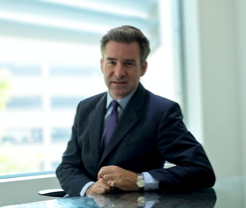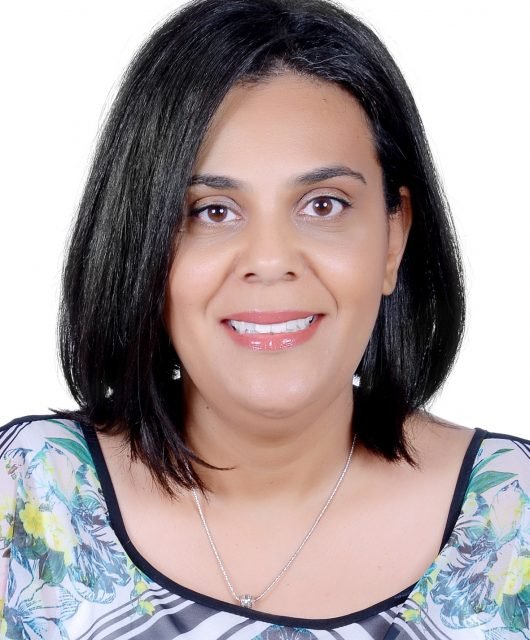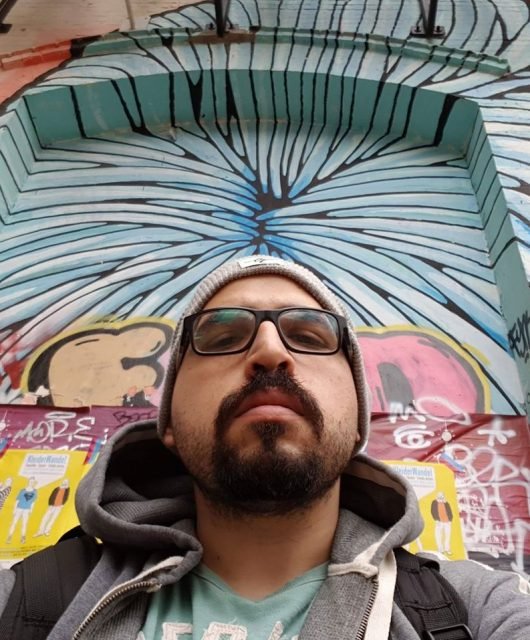Brandstorms is a series of conversations with top experts around a controversial issue that has been stirring a debate in the brand scene.
Recently, there has been an outrage among the online masses following complaints that the global leading social network, Facebook, has been flooded with fabricated posts and news in synchronization with the recent American Presidential elections. The Brandberries interviewed Marshall Manson, UK CEO-Ogilvy Public Relations, Alex Malouf , Vice Chairman- MEPRA ,David Gallagher, President, Growth and Development- Omnicom International Public Relations Group and Jonathan Shillington, MD- Grayling Middle East to get their insights on Brands and Fake news.
BB: For brands, fake news on social media is an existential threat. Do you think this will effect the level of online brand engagement on social media platforms ?In times of fake news, should brands remain silent, refute news or generate content in a different direction ? Please elaborate

MM: I’m not sure that fake news is an existential threat, actually. Brands have been dealing with false attacked, misleading reports, and negative media for decades. Fake news, in that sense, really isn’t anything new.
AM: So far, brands have been lucky. There’s been little fake news relating to brands, possibly because the producers of fake news have assumed that political stories would generate more traffic. Following the election in the US this scenario may change. What we have seen is brands being called out in the US by the President-Elect for their policies (claims of over-charging, not hiring enough US employees etc). In the case of a number of brands, this has severely impacted stock prices. Brands must understand that staying silent isn’t an option. They need to clearly communicate their position in language that is understood by stakeholders on the same social media channels that are being used to communicate about the brands. They must make their voice as human as possible, avoid corporate speak, and work with their brand advocates, be it employees or customers, to argue for their position online. State the facts within a narrative framework and tell a story that generates a positive emotional response.

JS: Brands must always consider environmental factors at every point an interaction happens or is planned. That is the way of the world now – be it fake news or a world news story impacting the sector the brand operates in. Any communications plan has to be fluid and agile enough to change at the drop of a hat based on rapidly changing circumstances. Regarding responding to fake news stories there is no hard and fast rule. Every situation should be evaluated based on its likely impact on the brand reputation and its reach/influence. Brand guardians should choose their battles wisely – as well as their focus. Spending every day refuting fake news stories is time that could be spent building the brand.
DG: While ‘fake news’ has been a problem since the beginning of journalism and mass media, we see now what it looks like on steroids. Once upon a time, editors could verify and validate sources, and control what was published or broadcasted; now, any piece of content can be made to look authentic and easily spread on social media. Much of it might go unnoticed or cause little damage, but any given fake story can damage a brand or organization significantly. So it’s yet another risk for communicators to monitor and assess.
BB: In the light of the U.S. election and related attacks on brands, much of the public has become aware that there are consequences to living in the “share bubble”. How can brands proactively manage crises that arise from the fake news going viral ?
MM: Again, the answer really depends on the specific circumstances, but if the crisis is bad enough, a brand can always use paid social and search to ensure that everyone in a given target audience sees a piece of content. In other words, brands can use paid to break through the filter bubble. But we would only advise a brand to do that in most difficult crisis situations. Normally, it’s fine to focus on friendly voices during a crisis, and encourage them to advocate for the brand.

AM: There’s a number of ways to proactively manage online issues. The first step is to have an effective listening framework in place; prevention is always better than cure, and knowing about, understanding and being able to analyze sentiment online is key to tackling issues. Brands need to regularly engage with their advocates at all times, so that when a potential crisis does rear its head, the brand’s online community are ready and willing to take action to defend the brand. Brand advocates are the best defense against any online issue, especially fake news, and brands need to grow their genuine fans online through regular interaction. It also doesn’t feel sincere for a brand to put out a call to action or engage their followers only when there’s a crisis. Relationships are about give and take, including online, and brands need to improve their engagement. Brands also need to be transparent online, and be aware of what information exists online about them. They need to have a strong online voice which is values-based and which resonates powerfully with different stakeholders. A strong voice, a dedicated community of advocates and, most importantly, the ability to listen will help defuse any potential online crises.
JS: If something that starts off as a rumor or an allegation that is not correct, then escalates to become a trending social media topic or is picked up by the mainstream media, it is the responsibility of the brand or organization in question to set the record straight in a timely and clear manner – otherwise the situation can quickly spiral to become a serious crisis. For organizations where they are responsible for peoples lives – such as airlines, hotels, etc – this is so important. Having detailed crisis communications as well as online monitoring procedures in place is key to this. Preparation is key to any potential crisis situation – and having clear protocols in place in how to assess an issue before it becomes a potential large scale crisis is so important. You have to take each case as it comes of course, and assess the potential impact of the particular rumour or fake news as it comes through, before you react publicly to it. For example, if it is some isolated tweets, by a disgruntled individual with very little pick up – it may be best to monitor but not to respond, as this could fuel further pick up of the fake story unnecessarily. But if it does start to escalate in terms of being shared and commented on, and then even picked up by the mainstream media, you clearly have a responsibility to make a statement through appropriate channels such as Twitter, to set the record straight – and kill the story before it becomes a real crisis.

DG: I’m not sure most people see themselves in a bubble – that’s usually a trait used to describe “other people” but I think they are more sensitive to the possibility that some news may not be real. Brands subjected to fake news attacks or rumors should quickly communicate the facts through trusted news sources and with senior, credible spokespeople.
BB: Is it becoming increasingly critical for brands to consider the cultural contexts that make fake news so popular ?
MM: Cultural context is key for all content. Brands have to be producing content that’s relevant. It needs to speak to audience interests, and also connect with something wider, that’s already in their consciousness. Fake news works because it follows the same rules as other content. If it’s interesting, intriguing, entertaining, or surprising, it’s going to attract people’s attention. And they’re going to share it.
AM: This is a tough question to answer, simply because fake news isn’t yet a global phenomenon across all cultures and languages – it’s mainly impacted the US. This may change. We have seen the rise of click-bait journalism over the past four years, including in Arabic. Fake news has become a phenomenon partly due to our own biases – we want to believe news that we are inclined to believe in. Traditional journalism is in decline in many parts of the world due to falling revenues, and social media combined with online advertising has made it easier and more lucrative than ever to write and distribute fake news. Again, we’ve not seen much of this in the Middle East (with the possible exception of Egypt), possibly due to our lower online spending, possibly also due to the fact that much of the online news is coming from Eastern Europe (primarily Macedonia) and Arabic isn’t a language known to these fake news producers. Producing and disseminating fake news is also a criminal offense in much of the Gulf. These circumstances may change, and we may see more fake news pieces in the region, first in English. Only time will tell.
JS: Yes, it is important – what could be interpreted as highly offensive and even litigious in one country or region, could be seen as light hearted opinion in another. So, being careful to consider these sometimes intangible aspects is important, as quickly jumping in with a formal reaction could make a trivial situation far more damaging. Because of social media today, where there are no geographical or cultural boundaries, it can be very easy for misinterpretation.
DG: Fake news is popular because it’s surprising – and people love to be first to share surprises.
To be continued,





